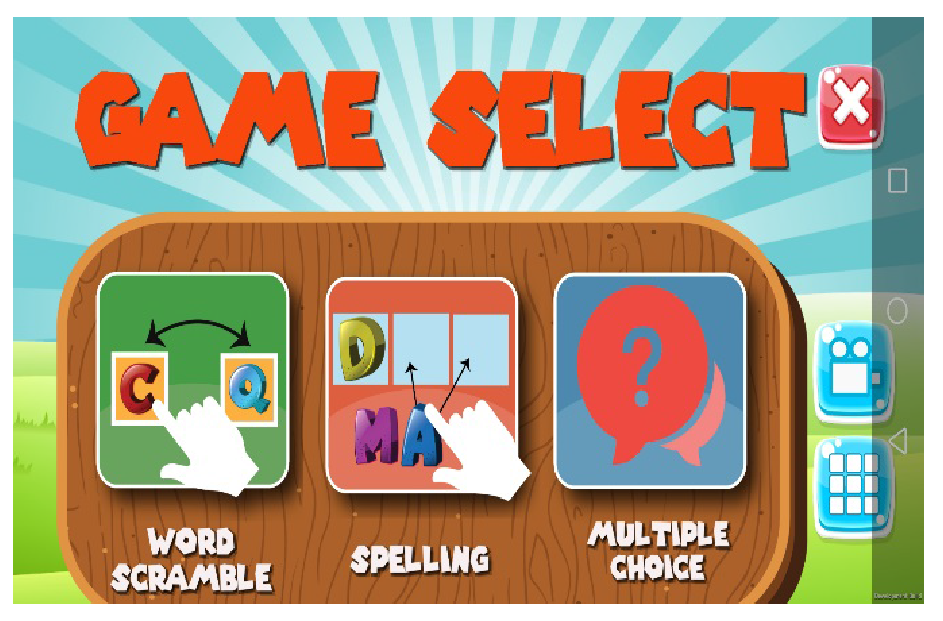The development of the English vocabulary application on Android operating system for upper – primary students in five southern border provinces
Main Article Content
Abstract
The objectives of this research were to: 1) develop and find the efficiency of the English vocabulary application for the upper primary students in five southern border provinces on the Android operating system based on the 80/80 efficiency criterion; 2) compare students efficiency before and after using English vocabulary application, and 3) evaluate and follow up the usage of English vocabulary application by the stakeholders. 200 students of upper primary level were chosen by cluster random sampling as the sample group. The research instruments were an English vocabulary application, an achievement test, and an evaluation form of the stakeholders. The statistics for the data analysis were average and t-test. The results of the research were: 1) the efficiency of the English vocabulary application by finding E1 and E2 values was 80.42/83.50; 2) the t-test result indicated that students' achievement scores after using the English vocabulary application was statistically higher than that ofbefore using the English vocabulary application at .05 level of significance; and 3) the student efficiency index was 0.24. This represented that 24 percent of students' English vocabulary knowledge was increased through the English vocabulary application on the android operating system. Moreover, the students' satisfaction towards the English vocabulary application was 4.51 or 90.37 which was in the level of "very good".
Article Details
References
J. I. Berne, C. L. Z. Blachowich, What reading teachers say about vocabulary instruction: Voices from the classroom, The Reading Teacher 62(4) (2008) 314 – 323.
X. Shi, Application of multimedia technology in vocabulary learning for engineering students, International Journal of Emerging Technologies in Learning 12(1) (2017) 21 – 31.
J. V. Pavlik, Fueling a third paradigm of education: The pedagogical implications of digital, social and mobile media, Contemporary Educational Technology 6(2) (2015) 113 – 125.
G. Stockwell, Using mobile phones for vocabulary activities: Examining the e ect of the platform, Language Learning & Technology 14(2) (2010) 95 – 110.
A. Kukulska-Hulme, Mobile learning and the future of learning, International HETL Review 2 (2012) 13 – 18.
I. A. Khan, Local culture in the foreign language classroom : An exploratory study of teachers’ preparedness in Saudi Arabia, International Journal of Sciences: Basic and Applied Research 25(1) (2016) 97 – 122.
M. O. M. El-Hussein, J. C. Cronje, Defining mobile learning in the higher education landscape, Educational Technology & Society 13 (3) (2010) 12 – 21.
B. T. Wang, Designing mobile apps for English vocabulary learning, International Journal of Information and Education Technology 7(4) (2017) 279 – 283.
R. Gangaiamaran, M. Pasupathi, Review on use of mobile apps for language learning, International Journal of Applied Engineering Research 12(21) (2017) 11242 – 11251.
R. Godwin-Jones, Emerging technologies: Mobile apps for language learning, Language Learning & Technology 15(2) (2011) 2 – 11.
K. Graves, Designing language course, A Guide for teachers, Boston, Heinle, Cengage Learning, 2000.
I. Hermagustiana, D. Rusmawaty, The use of technology for vocabulary instruction in EFL classrooms: Support and challenges, Advances in Intelligent Systems Research (144) (2017) 137 – 143.
B. R. Robin, Digital storytelling: a powerful technology tool for the 21st century classroom, Theory into practice 47 (2008) 220 – 228.


